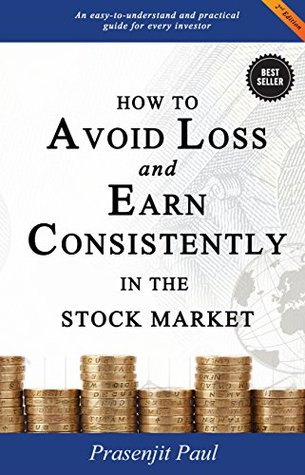More on this book
Community
Kindle Notes & Highlights
Read between
January 4 - January 7, 2019
“This book is my attempt to save hard-earned money of small investors in equity investing.”
Investing in high-quality business (stock) at the right price and holding them for a reasonable period is the only way for wealth creation. It doesn’t require an MBA in finance or equivalent degree to select high-quality stocks. Stock picking skills are often considered as one of the most complex subjects in the world. However, anyone from any background can learn it with passion, hard work, and dedication towards the stock market.
the interesting fact is that almost all billionaires in the world have created their fortune through the stock market, either directly or indirectly. “Directly” refers to the direct stock investing and “Indirectly” refers to listing their companies on the stock market.
The Only Way for Wealth Creation Historically it is proved that only stock market and real estate investment can offer an above-inflation return in the long run. Real estate requires big-ticket investment. Thus the market is not accessible for small investors. For salaried individuals and other professionals, the stock market is the only way for wealth creation. Avoiding equity investment means your retirement life is at risk. Among real estate and stock market, the latter should be the preferred choice for every individual due to the following reasons- You can start investment in equities
...more
on the very next day. You can buy and sell stocks from anywhere in the world. With the advent of online trading, physical presence is not necessary. Buying and selling can be done with just a click of a mouse. However, in real estate, investment is not that simple.
Investors are satisfied with 7%-8% interest on bank’s fixed deposit investment. However, the same person is not happy with 25% annualized return from the stock market! More than double return that of bank deposit or post office deposit. Still, they demand more return from stocks! For me, 20%-30% annualized return from the stock market is sufficient, anything above that is a bonus.
For analysing debt position of any company, there are numerous ratios like – Debt to Equity Ratio Interest coverage ratio Current Ratio Quick Ratio Debt to owners fund
Increasing ROE over the last 5-10 years with improved operating margin and cash flow is a prominent signal of economic moat.
The following chart will summarise the entire portion – Shareholding Pattern and effects on stock price Entity Effect on Stock Price Increasing Decreasing Promoters Positive Negative/Positive Institutional Investors (FII and MF) Positive Negative Retail Investors Negative Positive
Higher dividend payout ratio with increasing dividend rate confirms shareholder’s friendliness of management.
consistently. Always consider last 5 year’s average ROE.
– Great Business Potential multibagger Great Management – Bad Business Cyclical return Bad Management – Great Business Moderate return Bad Management – Bad Business Wealth Destroyer
The ratio is simple and easy to calculate. You can easily get the calculated P.E ratio at any financial website. There are two ways to calculate P.E ratio; trailing and forward. Trailing P.E ratio considers the EPS of past four quarters while forward P.E considers the analyst’s estimation of the next year’s EPS. Maximum financial websites report trailing P.E ratio whereas various brokerage houses present forward P.E in their research reports.
P.S ratio is of more use when you are analysing stocks that are in the cyclical industry (like- Auto, Cement, Steel, etc.) Companies having one-time profit/charge can also be valued through this ratio. P.S ratio comes handy for any turnaround companies.
Like every ratio, the P.B ratio also has several advantages and disadvantages. This ratio is useful for analysing Banking/NBFC stocks and other capital intensive business but doesn’t have much significance in the service sector or software firms. Lower the ratio better is the investment opportunity.
For further clarification, let’s consider the example of Yes Bank. During 2010-2014, Yes Bank has a consistent average growth rate of around 38%. During the same period, the stock mostly traded in the P.E band of 6-22.Thus, average P.E becomes 14. With the average earnings growth rate of 38%, PEG ratio will remain below 0.5. PEG = P.E/ Average earnings growth rate PEG = 19/38 =0.5
The sole purpose of the investment is to maximise the return with calculated risk.
Never get emotionally attached to any stock. It is not necessary that the past winners will repeat the same performance in the future. Don’t hesitate in shifting to the better opportunities even if the stock has given multifold return in the past.
Don’t repent after selling. You need to admit that nobody can identify the top and exit accordingly.
Don’t invest like a trader and don’t trade like an investor!
Mutual fund is beneficial if you don’t have time and reliable equity advisor for guidance in direct equity investment.
So, just putting the statement - “If the stock under consideration has P.E ratio of more than two times of last three years average EPS growth then avoid the same.”
If last three years annualised return is less than 10% and last one year’s return is negative then mark as “Avoid”. If last three years annualised return and last one year’s return both are negative then avoid the stock. Only consider stocks for investment having last three years annualised return is more than 10% with last one year’s return is positive.
Return on Equity is more than 18% or improving to reach the desired figure within the next few years. Current debt to equity ratio is less than 1 or reducing significantly over the last few years. P.E ratio is less than twice of the last three years average EPS growth rate. Less than 20% promoter’s pledging or reducing every year/quarter from a higher level.


